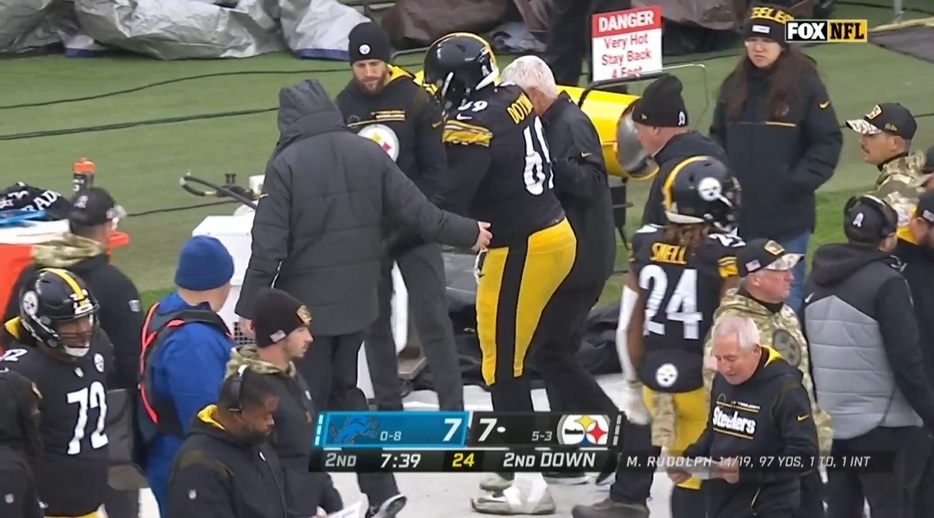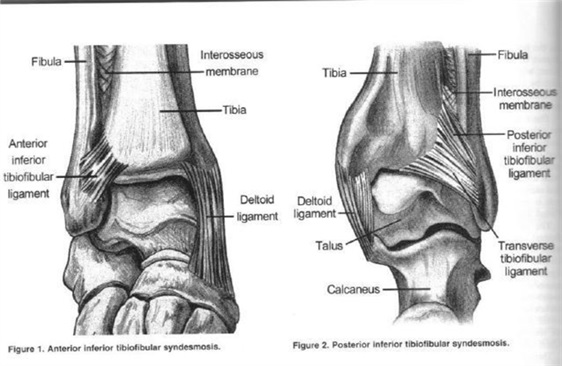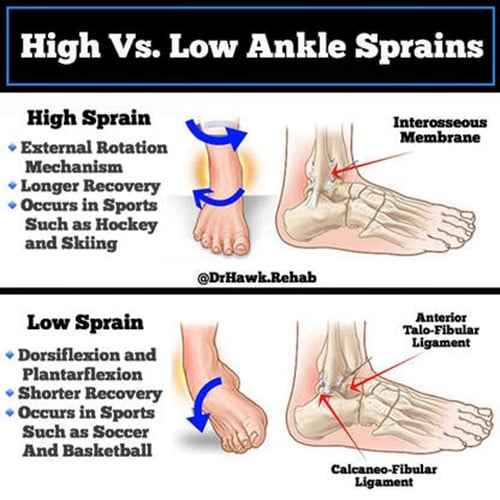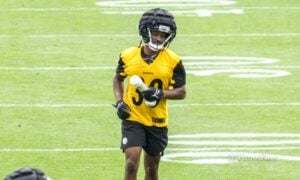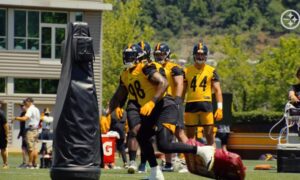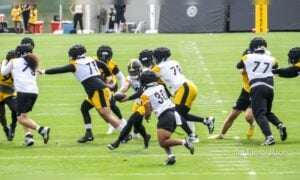In the second quarter of an ugly game against the Detroit Lions that eventually ended in a tie, Steelers’ LG Kevin Dotson left the game with an injury. He was ruled out for the remainder of the game, and his injury was described as “an ankle” by head coach Mike Tomlin following the game.
While there was concern for many that the injury was quite serious based on how quickly Dotson was ruled out to return to play yesterday, the mechanism was pretty classic for a high ankle sprain. On film, you can see the external rotation of his right foot, and he pulls up short as soon as he finishes his block.
The diagnosis of high ankle sprain was confirmed by NFL Insider Ian Rapoport today:
Dotson got a late start in this year’s training camp due to an ankle injury which was likely a sprain, and underwent treatment with PRP to speed his recovery. There was never a report on which ankle was involved back in August, so it is not clear if this is a re-injury or a new injury. Based on his play since the start of the season, the prior injury was clearly healed, so it should not impact his recovery regardless of which ankle was involved then.
High ankle sprains are quite different from low ankle sprains with respect to the actual injury as well as the return to play. First, a quick anatomy review.
The ankle joint is formed by multiple ligaments and tendons that connect the bones and muscle (a quick reminder: Ligaments connect bone to bone and tendons connect muscle to bone; a sprain is a ligament injury and a strain is a tendon injury).
A lower ankle sprain involves the ligaments that connect the tibia and fibula (the two bones between the knee and ankle) to the bones of the ankle. A high ankle sprain is an injury to the ligaments that connect the tibia and fibula to each other just above the bones of the ankle. This is sometimes referred to as a syndesmotic sprain, referring to the interosseous (between bone) membrane.
Figure 1 www.orthobullets.com
The mechanism of injury tells you a lot about what type of sprain occurs.
Figure 2 http://www.milnerchiropractic.ca
An external rotation of the foot is more likely to cause a tear of the ligaments which connect the tibia and fibula, whereas inversion stretches the lateral ankle ligaments. Check out the angle of Dotson’s right lower leg on the play where he got injured, and it’s pretty clear that he sustained a high ankle sprain, which I tried to reassure folks at the time:
I think the speed in ruling Dotson out is the simple fact that a lineman playing on a high ankle sprain can result in a significant exacerbation of the sprain. So when the Steelers ruled Dotson “OUT” almost immediately, I think that it was more caution than concern. And the lower the grade of the sprain, the sooner the team will get him back because not all ankle sprains are equal, of course.
Grade 1 sprains are minimal ligament tears or stretches, Grade 2 are partial tears, and Grade 3 are full tears. What makes a Grade 3 high ankle sprain so serious sometimes is that the fibula and tibia bones can actually be spaced further apart from each other, making the ankle joint unstable. Surgery may be required in that case. It is the presence or absence of this diastasis, or widening of the space between the tibia and fibula, that really defines the severity of the high ankle sprain. While high ankle sprains typically require a longer recovery, a mild high ankle sprain can heal faster than a bad lateral ankle sprain. And that’s an important consideration when looking at recovery time.
- A study from the University of Michigan followed 20 NCAA Division 1 football players with a Grade 1 high ankle sprain. The mean time to return to play was 15.5 days, and none of the players missed more than 30 days.
- In a study presented at the American Academy of Orthopaedic Surgeons meeting in 2012 and later published, a single NFL team database was studied over a 15 year period. 36 syndesmotic/high ankle sprains and 53 lateral ankle sprains were identified over this time. All players were managed non-operatively. The mean time lost from participation was 15.4 days in the syndesmosis and 6.5 days in the lateral ankle sprain groups.
- A review of high ankle sprains in the NFL database across 11 seasons just published last May 2021 showed an average return to play of 11.5 weeks, with defensive players returning faster (9.7 weeks) than offensive players (12.8 weeks).
Obviously, those studies have a huge range in recovery and return to play times. We know from experience as fans that the typical high ankle sprain usually means about 4-6 weeks of missed games, and it’s likely that will be the case for Dotson, as well.
Don’t be surprised if the Steelers place Dotson on IR to clear a roster space for a replacement, and don’t be alarmed. With the new IR/Return rules, this would only require Dotson to miss three games, which he likely would anyway. I would expect to see him back at practice in mid-December, with the plan to use the ten days after the Dec. 9 Thursday Night Football game at the Minnesota Vikings to work Dotson back into the lineup for the Week 15 game against the Tennessee Titans.
“Melanie H. Friedlander, M.D., F.A.C.S. is a doctor at Association of South Bay Surgeons in Torrance, California. Dr. Friedlander enjoys all aspects of general surgery, but her primary areas of focus are breast surgery and advanced laparoscopic surgery. She recently adopted an advanced, minimally invasive technique that reduces scar size in thyroid surgery. Dr. Friedlander is a member of the Society of American Gastrointestinal Endoscopic Surgeons (SAGES) and the Society of Laparoscopic Surgeons. She developed and published many scientific studies in highly esteemed medical journals.”

